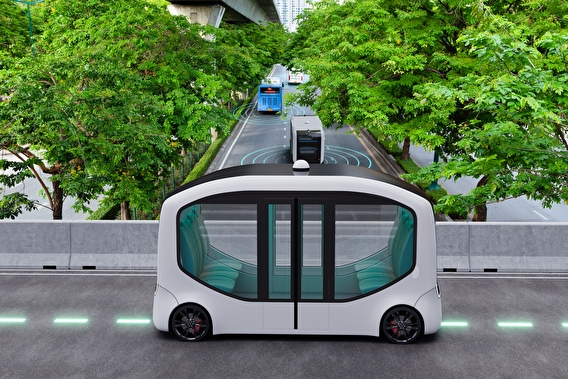About the Research

Fully automated vehicles (AVs), or driverless cars, will be commonplace sooner than you think. Right now, car makers and transportation network companies such as Uber and Lyft are steering AV development. Without public input, this market-driven approach could worsen traffic congestion, sideline public transit, and increase social inequities. It could also hit state and local budgets hard, as revenues from taxes, parking, and associated activities dry up.
But it doesn’t have to be this way. New research centered at the University of Minnesota shows how, by planning carefully for AVs, we could make the most of this technology revolution to improve transportation and make it more equitable for all.
In an NSF-funded study, a large interdisciplinary team examined the potential of one approach: shared automated vehicles (SAVs). The team examined not only how SAV networks could work but also what the impacts on society might be.
The researchers examined considerations around the rollout and regularized use of a hypothetical SAV system in a medium-sized metropolitan area: Minneapolis–St. Paul. They explored several scenarios with increasing levels of SAV adoption. In developing these scenarios, the researchers identified the issues that policymakers, planners, and mobility-on-demand companies must address to create an integrated system of SAVs—and, ultimately, a healthy, equitable, livable, and prosperous future.
Research Team
- Principal Investigator: Zhi-Li Zhang, Professor, Department of Computer Science and Engineering
- Co-Investigators:
- Saif Benjaafar, Professor, Department of Industrial and Systems Engineering
- Yingling Fan, Professor, Humphrey School of Public Affairs
- Thomas Fisher, Professor, Metropolitan Design Center, College of Design
- Alireza Khani, Associate Professor, Department of Civil, Environmental and Geo- Engineering
Related Resources
- Research project page
- Advancing Social Equity with Shared Autonomous Vehicles: Literature Review, Practitioner Interviews, and Stated Preference Surveys (2022)
- Future Streets: Leveraging Autonomous Shared Vehicles for Greater Community Health, Equity, Livability and Prosperity (2021)
- A Vision for Future Streets: Leveraging AVs for Greater Health, Equity, Livability, and Prosperity (CTS Research Brief) (2022)
- Fostering Social Equity with Automated Vehicles (CTS Research Brief) (2022)
- Shared automated vehicles could make cities more livable, equitable (University of Minnesota Research Brief) (2022)
- Adding autonomous vehicles to ride-hailing fleets could benefit platforms and drivers (CTS Catalyst, Feb. 2022)
- Could remote drivers be the future of ride-hailing? (CTS Catalyst, Aug. 2022)
- Shared automated vehicles could make cities more livable, equitable (CTS Catalyst, Oct. 2022)
Sponsors
This research was funded as part of a National Science Foundation (NSF) Smart and Connected Communities grant (award no. CMMI-1831140)—Leveraging Autonomous Shared Vehicles for Greater Community Health, Equity, Livability, and Prosperity (HELP). Support also came from Dayton Hudson Foundation funds at the University of Minnesota Foundation.